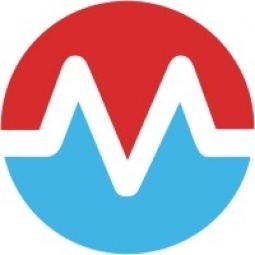公司规模
Large Corporate
地区
- America
国家
- United States
产品
- Expedient CTRL suite
- Automation CTRL
- Cost CTRL
技术栈
- VMware vSphere
- VMware vCloud Director
- Nutanix AHV
- AWS
- Azure
- GCP
- Ansible
- Color Tokens
- Cohesity
- Zerto
实施规模
- Enterprise-wide Deployment
影响指标
- Cost Savings
- Digital Expertise
- Productivity Improvements
技术
- 基础设施即服务 (IaaS) - 云计算
- 基础设施即服务 (IaaS) - 混合云
- 基础设施即服务 (IaaS) - 私有云
- 基础设施即服务 (IaaS) - 公共云
适用行业
- 金融与保险
- 医疗保健和医院
适用功能
- 离散制造
- 物流运输
- 维护
用例
- 预测性维护
- 车队管理
- 库存管理
服务
- 云规划/设计/实施服务
- 网络安全服务
- 数据科学服务
- 系统集成
关于客户
Expedient 是一家领先的全栈云服务提供商 (CSP),采用 Cloud Different™ 方法应对当今的多云挑战,帮助组织加速或重启转型之旅。该公司专注于通过屡获殊荣的解决方案和托管服务帮助客户转变其 IT 运营,这些解决方案和托管服务包括多云、灾难恢复、安全性、合规性、桌面即服务、主机托管等。该产品组合旨在简化客户向云的过渡,使他们能够专注于战略业务创新,而 Expedient 团队则负责支持它所需的 IT 运营。Expedient 是一家服务提供商,已有 20 多年的历史,最初是一家支持主机托管的物理数据中心和网络互连提供商,然后转向托管。该公司目前为医疗保健、保险、金融、制造业甚至其他技术提供商的数千家客户提供支持。其云基础设施部署在全球各地。该公司正处于增长模式,在美国拥有 14 个数据中心,业务范围正在迅速扩大。
挑战
Expedient 的客户希望将大量应用程序迁移到云运营模式中,其中包括他们在本地、托管数据中心或超大规模云中拥有的应用程序和资产组合。但是,找出将工作负载从当前环境最佳地放置在正确的云运营模式组合中是一项复杂的挑战。许多客户只完成了 30% 的迁移,原因是他们不知道有多少应用程序适合超大规模云模式,也没有设想其他方式来实现他们的目标。Expedient 需要一个通用的控制平面,它可以解锁并提供对客户端计算资源的访问,同时还为 Expedient 提供改进服务交付的工具。需要解决的主要问题是让客户更容易地将资源配置到多个云中而不会增加复杂性,提供对成本的洞察以确保客户获得最佳的性价比,并能够提供跨云的治理和对安全性的洞察。
解决方案
当 Expedient 寻找合适的混合云管理平台合作伙伴时,Morpheus 出现了,它采用统一的方法,可以跨不同环境,并消除工作负载配置的复杂性。这正是支持 Expedient 下一代产品所需的基础。Morpheus 提供了简单性和可扩展性的完美结合,为 Expedient 提供了一个从小处着手,然后随着时间的推移向客户展示新服务的机会。这反过来又使 Expedient 能够“转动旋钮”并为不同的客户选择正确的组合——只向他们展示他们想要看到的内容,而不是他们不需要的内容。Expedient 喜欢 Morpheus 与他们已经在使用的技术原生集成,并允许他们选择他们想要提供的体验,而无需大量脆弱的脚本或自定义代码。这种松散耦合的方法和开箱即用的集成支持可持续、可扩展的增长,可轻松适应新服务。多租户对于实现从单个租户的基本 VMaaS 到需要设置复杂组和角色结构以满足独特需求的大型企业客户的所有功能都非常重要。最后,Morpheus 减少了工具蔓延,这与 Expedient 的核心理念相一致,即更接近一种做事方式可以简化事情并降低成本。
运营影响

Case Study missing?
Start adding your own!
Register with your work email and create a new case study profile for your business.
相关案例.

Case Study
Hospital Inventory Management
The hospital supply chain team is responsible for ensuring that the right medical supplies are readily available to clinicians when and where needed, and to do so in the most efficient manner possible. However, many of the systems and processes in use at the cancer center for supply chain management were not best suited to support these goals. Barcoding technology, a commonly used method for inventory management of medical supplies, is labor intensive, time consuming, does not provide real-time visibility into inventory levels and can be prone to error. Consequently, the lack of accurate and real-time visibility into inventory levels across multiple supply rooms in multiple hospital facilities creates additional inefficiency in the system causing over-ordering, hoarding, and wasted supplies. Other sources of waste and cost were also identified as candidates for improvement. Existing systems and processes did not provide adequate security for high-cost inventory within the hospital, which was another driver of cost. A lack of visibility into expiration dates for supplies resulted in supplies being wasted due to past expiry dates. Storage of supplies was also a key consideration given the location of the cancer center’s facilities in a dense urban setting, where space is always at a premium. In order to address the challenges outlined above, the hospital sought a solution that would provide real-time inventory information with high levels of accuracy, reduce the level of manual effort required and enable data driven decision making to ensure that the right supplies were readily available to clinicians in the right location at the right time.

Case Study
Gas Pipeline Monitoring System for Hospitals
This system integrator focuses on providing centralized gas pipeline monitoring systems for hospitals. The service they provide makes it possible for hospitals to reduce both maintenance and labor costs. Since hospitals may not have an existing network suitable for this type of system, GPRS communication provides an easy and ready-to-use solution for remote, distributed monitoring systems System Requirements - GPRS communication - Seamless connection with SCADA software - Simple, front-end control capability - Expandable I/O channels - Combine AI, DI, and DO channels

Case Study
Driving Digital Transformations for Vitro Diagnostic Medical Devices
Diagnostic devices play a vital role in helping to improve healthcare delivery. In fact, an estimated 60 percent of the world’s medical decisions are made with support from in vitrodiagnostics (IVD) solutions, such as those provided by Roche Diagnostics, an industry leader. As the demand for medical diagnostic services grows rapidly in hospitals and clinics across China, so does the market for IVD solutions. In addition, the typically high cost of these diagnostic devices means that comprehensive post-sales services are needed. Wanteed to improve three portions of thr IVD:1. Remotely monitor and manage IVD devices as fixed assets.2. Optimizing device availability with predictive maintenance.3. Recommending the best IVD solution for a customer’s needs.

Case Study
HaemoCloud Global Blood Management System
1) Deliver a connected digital product system to protect and increase the differentiated value of Haemonetics blood and plasma solutions. 2) Improve patient outcomes by increasing the efficiency of blood supply flows. 3) Navigate and satisfy a complex web of global regulatory compliance requirements. 4) Reduce costly and labor-intensive maintenance procedures.

Case Study
Cloud-based healthcare solution for Royal Philips
Royal Philips wanted to launch its cloud-based healthcare solution HealthSuite Digital Platform in China to deliver services to help cope with challenges related to urbanization and population growth. Philips wanted to achieve this goal by combining mobile, cloud computing and big data technologies. To bring this platform and product to market, Philips required cloud computing and local technical service capabilities in China, in addition to a flexible IT infrastructure that could handle user requests.








